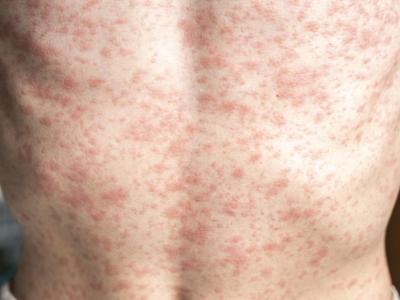Trial supports shorter antimicrobial prophylaxis for orthopedic surgery
A randomized clinical trial found that a shorter antimicrobial prophylaxis (AMP) duration for "clean" orthopedic surgery (scheduled procedures not involving complications like open wounds) was non-inferior to a longer duration in preventing healthcare-associated infections (HAIs), Japanese researchers reported today in JAMA Network Open.
In the multicenter, cluster randomized trial, 1,211 participants undergoing clean orthopedic surgery were divided into two groups: one had AMP discontinued within 24 hours of wound closure (group 24), and the other had AMP discontinued within 24 to 48 hours (group 48). Group allocation was switched every 2 to 4 months according to the facility-based cluster rule. The primary outcome was incidence of HAIs requiring antibiotic therapies within 30 days of surgery. The non-inferiority margin was 4%.
There were 633 participants (median age, 73; 60.5% women) in group 24 and 578 participants (median age, 74; 64.7% women) in group 48. HAIs occurred in 29 patients (4.6%) in group 24 and 38 patients (6.6%) in group 48. Intention-to-treat analyses showed a difference in the risk of HAIs of −1.99 percentage points (95% confidence interval [CI], −5.05 to 1.06 percentage points; P < .001 for non-inferiority) between groups, indicating non-inferiority. Results of adjusted intention-to-treat, per-protocol, and per designated procedure population analyses supported this result, without a risk of antibiotic resistance and prolonged hospitalization.
The findings are noteworthy because several studies have shown that AMP is still routinely continued for several days after orthopedic surgery, despite concerns that prolonged AMP may increase the risk of antimicrobial resistance.
"To our knowledge, this is the first large size clinical trial to elucidate the effect of AMP duration on postoperative HAI in the field of orthopedic surgery," the study authors wrote. "Our results support the global notion against antimicrobial resistance and may encourage surgeons to shorten AMP duration and reduce the antibiotic load in clean orthopedic surgeries."
Apr 12 JAMA Netw Open study
Remote stewardship in rural nurseries tied to fewer infant antibiotics
Implementation of a remote antibiotic stewardship program (ASP) in medically underserved newborn nurseries was associated with a decline in the number of infants exposed to antibiotics and total antibiotic use, researchers reported today in Pediatrics.
The remote ASP, implemented at eight rural nurseries in Texas, included 24/7 provider-to-provider phone consultation with a neonatal infectious diseases specialist, on-site and virtual education sessions on topics such as early-onset sepsis and the risks and benefits of antibiotic exposure in newborns, and prospective audit and feedback of prescribing practices. Using a cluster-randomized, stepped-wedge design, researchers evaluated the impact of the program over 3 years, including a 15-month baseline period, a 9-month step-in period using random nursery order, and a 12-month post-intervention period.
During the study period, there were 9,277 infants born, 4,586 of them preintervention and 4,691 postintervention. The proportion of infants exposed to antibiotics declined from 6.2% pre-ASP to 4.2% post-ASP (absolute risk reduction, 25%; relative risk 0.68; 95% CI, 0.63 to 0.75). Similarly, total antibiotic use declined from 117 to 84.1 days of therapy per 1,000 patient-days (-28%; 95% CI, −22% to −34%). No safety signals were observed; the mean length of stay was unchanged (1.84 days preintervention, 1.83 days postintervention), as was the frequency of infant transport to a higher level of care (0.26% preintervention, 0.23% postintervention).
The ASP also proved feasible for staff. There were 451 provider-to-provider phone consultations during the study period, and most were less than 5 minutes and occurred during normal business hours.
The study authors say that while the sample size is small, the findings suggest that remote ASPs could be a viable strategy for rural or medically underserved nurseries.
"A 2% absolute reduction in antibiotic exposure is a small decrease; however, if applied to the approximately 1.7 million births in rural or medically underserved areas in 2020, this reduction would equate to over 30,000 less antibiotic courses, which in turn could reduce the risk of obesity, asthma, eczema, diabetes, metabolic syndrome, multidrug resistant organisms, and other adverse consequences of early antibiotic exposure," they wrote.
Apr 12 Pediatrics abstract












